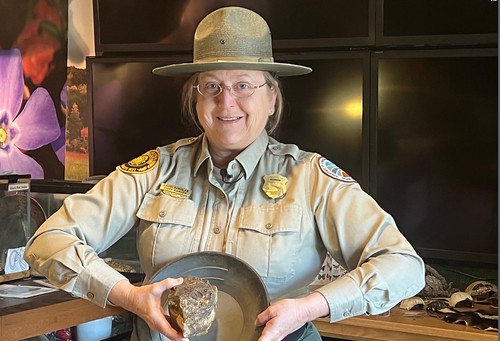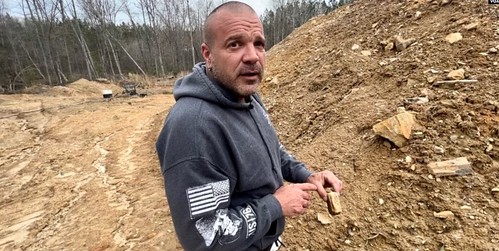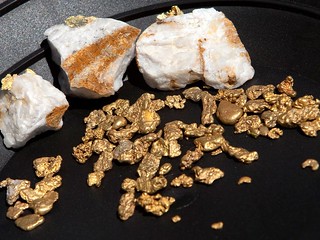
PREV ARTICLE
FULL ISSUE
PREV FULL ISSUE
FINDING GOLD IN VIRGINIASpeaking of gold, last week we discussed how the recent rains and flooding have reinvigorated the search for gold in California. Here's an article about searching for gold back East, in my own state of Virginia. -Editor The Commonwealth of Virginia traces its roots to the perennial quest for gold. England's King James I chartered what would become the Virginia Company in 1606 in a colonizing pursuit of gold, spices and land. While land was abundant, there were no discoveries of spices or gold. Renewed buzz about prospects for Virginia gold was prompted by a future U.S. president, Thomas Jefferson, publicizing in 1782 the discovery of a 1.8-kilogram gold-bearing rock on the north side of the Rappahannock River. But the precious metal was not found in abundance within the borders of Virginia until the early 19th century. Gold mining in Virginia peaked as the third-largest producing state in the country yielded hundreds of commercial caches north of the James River in the 225-kilometer-long Pyrite Belt. Much of the gold from the state was shipped to the U.S. Mint in Philadelphia, helping to wean the young nation off foreign coinage and private tokens as legal tender. The Virginia boom went bust from 1848 when the California gold rush compelled serious speculators to go west. Nowadays, there are limited opportunities in Virginia to experience gold fever. Fauquier County's Gold Mining Camp Museum, at Monroe Park in Goldvein, allows visitors to try their luck at a sluice after purchasing bags of gems. The park is also home to artifacts found at one of the 19 mines that operated within an eight-kilometer radius. At Lake Anna State Park in Spotsylvania County, rangers escort visitors to a semi-clandestine spot adjacent to the old Goodwin gold mine to work a pan in a pond and see what washes up. Those lucky enough to spot specks of gold will, however, leave empty-handed. All discoveries in the Virginia state park must remain on the premises. Well that sucks. But the article gets more interesting with its interview of Virginia's only licensed commercial miner, Paul Busch. -Editor Nineteenth century miners' trash is his treasure, piled high in Goochland County at the site of a mine with extensive mercury contamination that closed down in 1936. Back then, gold was worth around $35 an ounce (28.35 grams). These days it is about $2,000 an ounce. "Anything under an ounce per ton on an average to them wasn't worth running and processing. They knew they were losing 50 to 60 percent of their gold in their tailings already. They could only process 20 tons in 24 hours," Busch, owner of Big Dawg Resources, explains, standing aside a hill of soil. "Any stone that was underground that they removed that was under an ounce per ton to them was garbage." Busch is going through those piles of stones again with machinery he says can extract as much as $800 worth of gold a minute. He is also cleaning up the mercury contamination and filling in any pits and shafts that still may be hazardous. "There's the potential for there to be a second gold mining boom to an extent" here, even though Virginia does not have large deposits, according to Busch. "For a small mining operation, there are a lot of veins out there that have been found over the years that could be highly profitable."
To read the complete article, see:
This Smithsonian article discusses several places in the U.S. where people are looking for and finding gold. -Editor
Many prospectors, like Brooks, enjoy the hobby of gold panning for more than just the possibility of striking it rich. Searching for gold has a vibrant past, attracting history buffs and adventurers alike.
To read the complete article, see:
To read the earlier E-Sylum article, see:
Wayne Homren, Editor The Numismatic Bibliomania Society is a non-profit organization promoting numismatic literature. See our web site at coinbooks.org. To submit items for publication in The E-Sylum, write to the Editor at this address: whomren@gmail.com To subscribe go to: https://my.binhost.com/lists/listinfo/esylum All Rights Reserved. NBS Home Page Contact the NBS webmaster 
|


